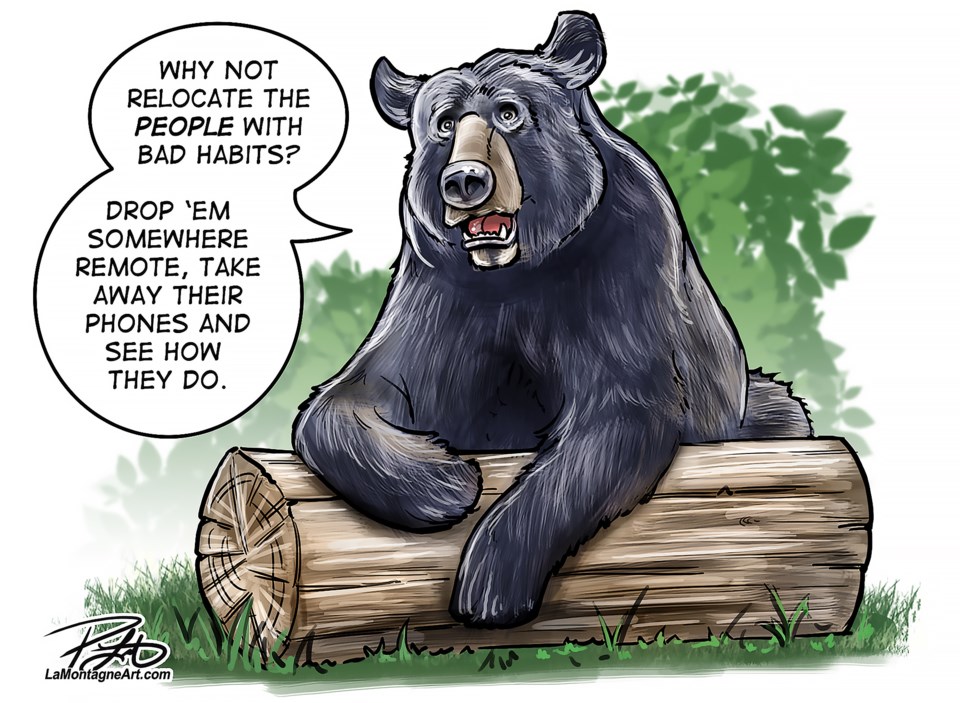A recent incident between a group of people and a pair of wandering black bears in the Town of Jasper highlights the need to further educate themselves when it comes to interacting with wildlife.
Taking place in the early hours of Aug. 30, a group of people began taking photos of themselves within metres of the bears feasting on fruit trees.
The incident was captured by a Jasper-based photographer and showcased another example of how people shouldn’t be interacting with wildlife.
It could’ve led to consequences where the people may have been injured had the black bears felt threatened, but ultimately, it led to the bears being relocated – which is essentially a death sentence for the bruins.
The relocation has the bears being introduced into another bears’ territory, leading to the potential risk for their survival, especially this close to the hibernation season. The chances of a bear surviving relocation is about 30 per cent, according to a 2018 Alberta study.
While the majority of people are respectful and educated on how to act near wildlife, it only takes a few people to cause the issue as seen in Jasper.
All too often, a select few people can forget or lack common sense and it risks putting both humans and wildlife at risk.
Not only are bears in the midst of fattening up for winter hibernation, but the annual elk rutting season is underway as bull elks look to attract mates and scare away potential competition.
The bugling of a bull elk can be an impressive and awe-inspiring moment to witness, but one that should be done at a significant distance.
Common sense can be easily applied to maintain safety for all involved. Whether it’s giving the proper space, always carrying bear spray, having dogs on leash and not lingering when in the general area of wildlife are conditions that must be followed and known by residents and visitors alike.
In 2022, both Banff and Canmore had multiple bears that became used to dining on fruit trees, which led to several being destroyed or relocated. In Canmore, a mama bear and its three cubs were relocated to Caroline after they got into unsecured food waste from a downtown restaurant. The bears – with the exception of one of the cubs who is believed to have died on the journey back to Canmore – made the 200-kilometre trek back to Canmore and were ultimately destroyed since they were used to being around humans.
Removal of fruit trees is an important aspect of keeping hungry wildlife out of the mountain towns of Banff and Canmore. For those who still have fruit trees, it’s vital to pick all fruit as quickly as possible or bite the bullet and get rid of the tree.
Residents have shown a high interest in taking part in municipal incentive programs to aid in the removal of fruit trees on private property.
With municipal budget discussions set to begin in the coming months, councils should look at additional ways – whether it be through more budget allocated to such programs or new ways to educate people – to help protect both wildlife and people.




